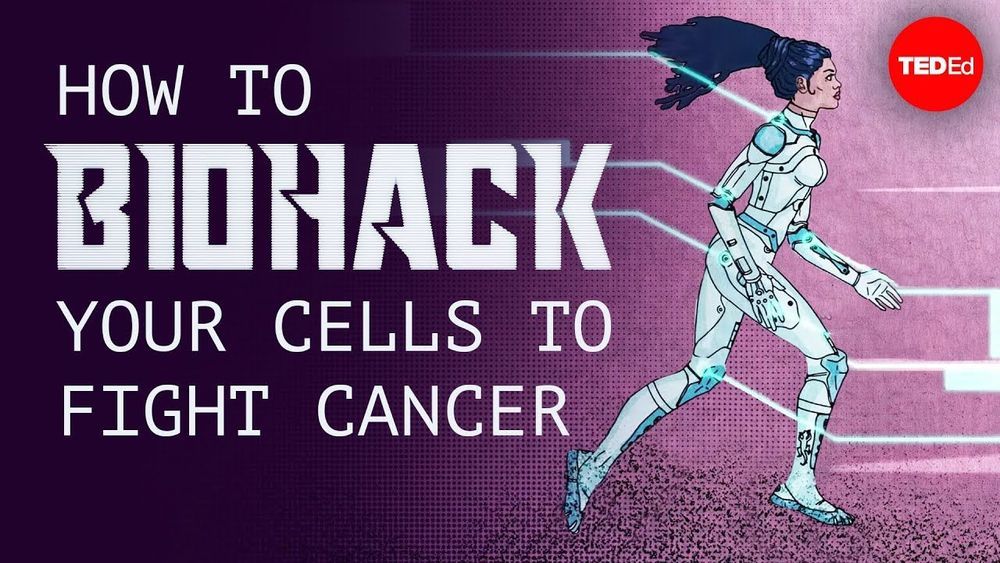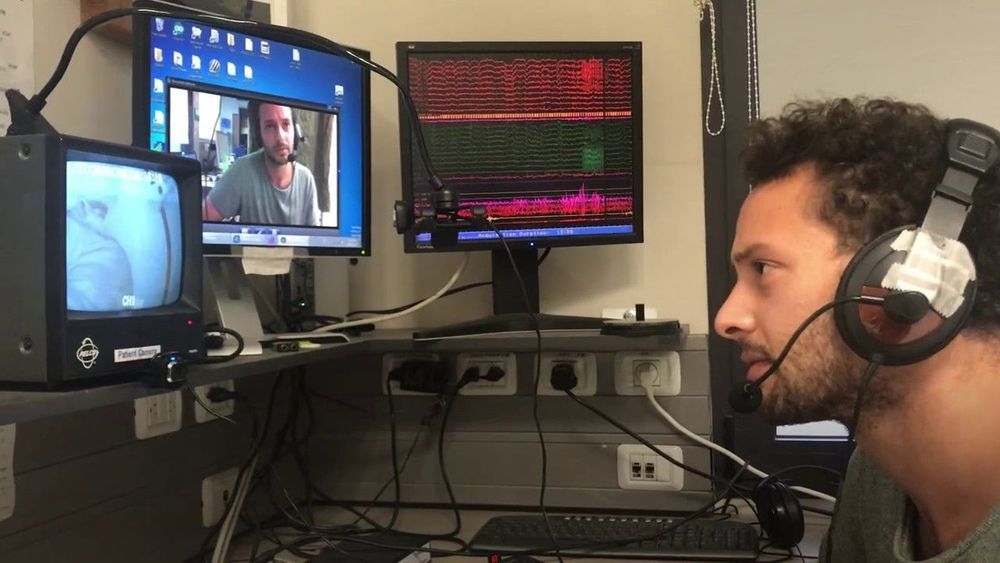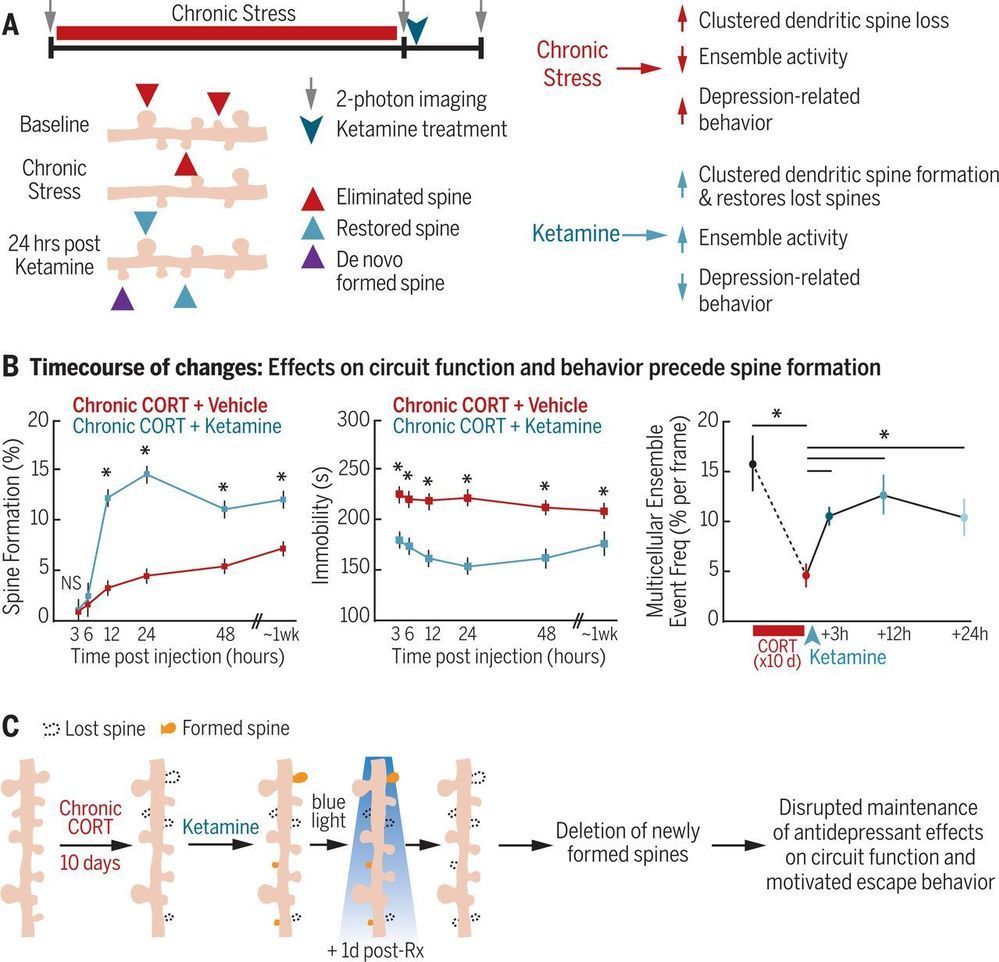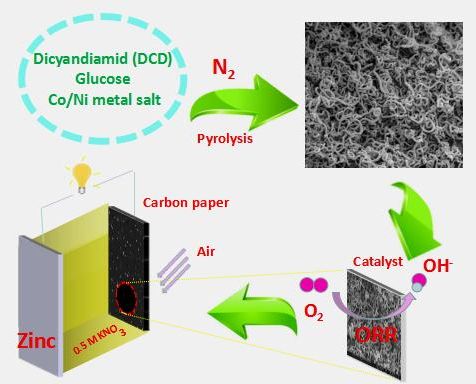Page 8512
Apr 13, 2019
You Need Vitamin D to Live. How Could This Woman Survive With None in Her Blood?
Posted by Genevieve Klien in category: biotech/medical
She had a series of bone fractures, but when doctors did blood tests, the supplements she took for treatment were nowhere to be found.
Apr 13, 2019
Heads in the cloud: Scientists predict internet of thoughts ‘within decades’
Posted by Paul Battista in categories: computing, internet, neuroscience
Summary: Researchers predict the development of a brain/cloud interface that connects neurons to cloud computing networks in real time. Source: FrontiersImagine a future technology that would.
Apr 13, 2019
Longevity Myth Busting — Aubrey de Grey
Posted by Paul Battista in categories: biotech/medical, life extension

Allison Duettmann challenges Aubrey De Grey with the top objections against longevity to be debunked and debated before opening up the floor to the public.
Aubrey de Grey, Ph.D.
Continue reading “Longevity Myth Busting — Aubrey de Grey” »
Apr 13, 2019
How to biohack your cells to fight cancer — Greg Foot
Posted by Paul Battista in categories: bioengineering, biotech/medical, genetics

Check out the science of biohacking, where biologists go into a patient’s genetic code and reprogram their immune system to recognize and fight cancer cells.
-
Continue reading “How to biohack your cells to fight cancer — Greg Foot” »
Apr 13, 2019
The world’s largest plane just flew for the first time
Posted by Heather Blevins in categories: space, transportation
After years of development in the desert north of Los Angeles, a gigantic, six-engined mega jet with the wingspan of an American football field flew Saturday morning for the first time.
“We finally did it,” said Stratolaunch Systems CEO Jean Floyd at a news conference from the hangar at Mojave Air & Space Port. “It was an emotional moment to watch this bird take flight.”
Stratolaunch, the company founded in 2011 by the late Microsoft co-founder Paul Allen, conducted the first test flight of the world’s largest plane.
Continue reading “The world’s largest plane just flew for the first time” »
Apr 13, 2019
Google’s Next Big Money Maker Could Be the Maps on Your Phone
Posted by Genevieve Klien in categories: business, economics, mobile phones
Indeed, Schindler stressed that Google would generate personalized Maps recommendations in “privacy-sensitive, opt-in ways.”
The company is betting that adding more data about places and businesses to Maps will lead people to spend more time on the service. As users expect more from Maps, Google has extra space to introduce more ads.
“We want to be able to highlight things that are around you and surface them nearby to you in a way that’s not disrupting your experience,’’ said Rajas Moonka, director of product management for Google Maps. Because so much of what users are looking for in Google Maps is commercial in nature, ads can be a helpful addition to the experience, he said.
Continue reading “Google’s Next Big Money Maker Could Be the Maps on Your Phone” »
Apr 13, 2019
Inside the lab using mind-changing psychology experiments to solve the Israel-Palestine conflict
Posted by Genevieve Klien in categories: electronics, neuroscience

To read a man’s mind, first you have to outline his skull.
Last November, I watched a psychologist use a digital pen to draw the circumference of a man’s head. The coordinates of his brain were quickly mapped, pinpointing the precise areas within his skull that process emotions. Behind him, a massive magnetic mind-reader—a neuroimaging device called a magnetoencephalography, or MEG—emerged from the wall, funneling into an oversized white helmet. It took two scientists to slowly maneuver the apparatus into position around his head.
Apr 13, 2019
Sustained rescue of prefrontal circuit dysfunction
Posted by Genevieve Klien in categories: biotech/medical, neuroscience
A better understanding of the mechanisms underlying the action of antidepressants is urgently needed. Moda-Sava et al. explored a possible mode of action for the drug ketamine, which has recently been shown to help patients recover from depression (see the Perspective by Beyeler). Ketamine rescued behavior in mice that was associated with depression-like phenotypes by selectively reversing stress-induced spine loss and restoring coordinated multicellular ensemble activity in prefrontal microcircuits. The initial induction of ketamine’s antidepressant effect on mouse behavior occurred independently of effects on spine formation. Instead, synaptogenesis in the prefrontal region played a critical role in nourishing these effects over time. Interventions aimed at enhancing the survival of restored synapses may thus be useful for sustaining the behavioral effects of fast-acting antidepressants.
Science, this issue p. eaat8078; see also p. 129.
Apr 13, 2019
Neutral Zinc-air battery with cathode NiCo/C-N shows outstanding performance
Posted by Genevieve Klien in categories: bioengineering, energy, sustainability
In a paper to be published in the forthcoming issue in NANO, a team of researchers from the School of Chemistry and Chemical Engineering at Hunan University of Science and Technology have proposed a novel strategy for the synthesis of non-precious metal catalysts in zinc-air batteries that do not compromise its electroactivity, affordability and stability.
As a green and sustainable energy generator, zinc-air battery has attracted great attention from researchers due to its high specific energy, high current density, low cost, and environmental friendliness. Yet it is not without its drawbacks. The slow oxygen reduction reaction (ORR) of its cathode has become an obstacle to its commercial application. One possible solution is to use platinum (Pt) and Pt-based catalysts, but its high cost and scarce availability make it less ideal. In addition, alkaline KOH (or NaOH) is generally used as the electrolyte, but it leads to the generation of carbonates (CO32-) due to the dissolution of CO2 in the electrolyte as well as the spontaneous corrosion of the anodic zinc in strong alkaline media. This has the effect of slowing down the ionic conductivity of the electrolyte and battery life. Therefore, a neutral electrolyte should be used instead.















